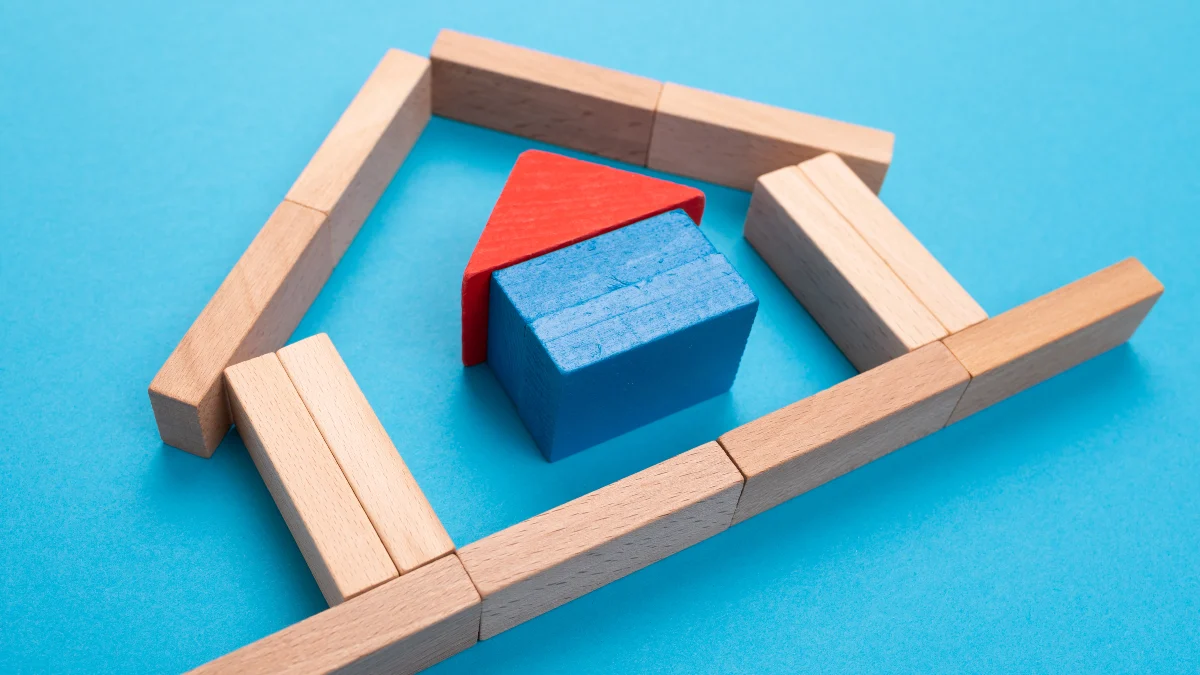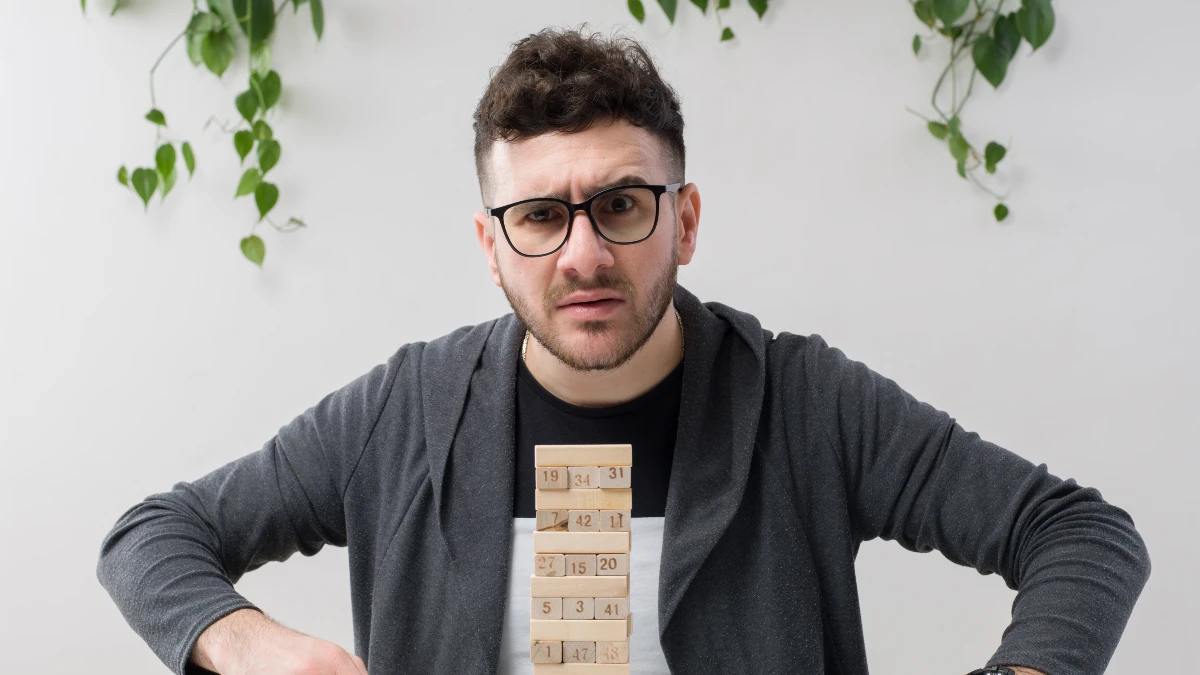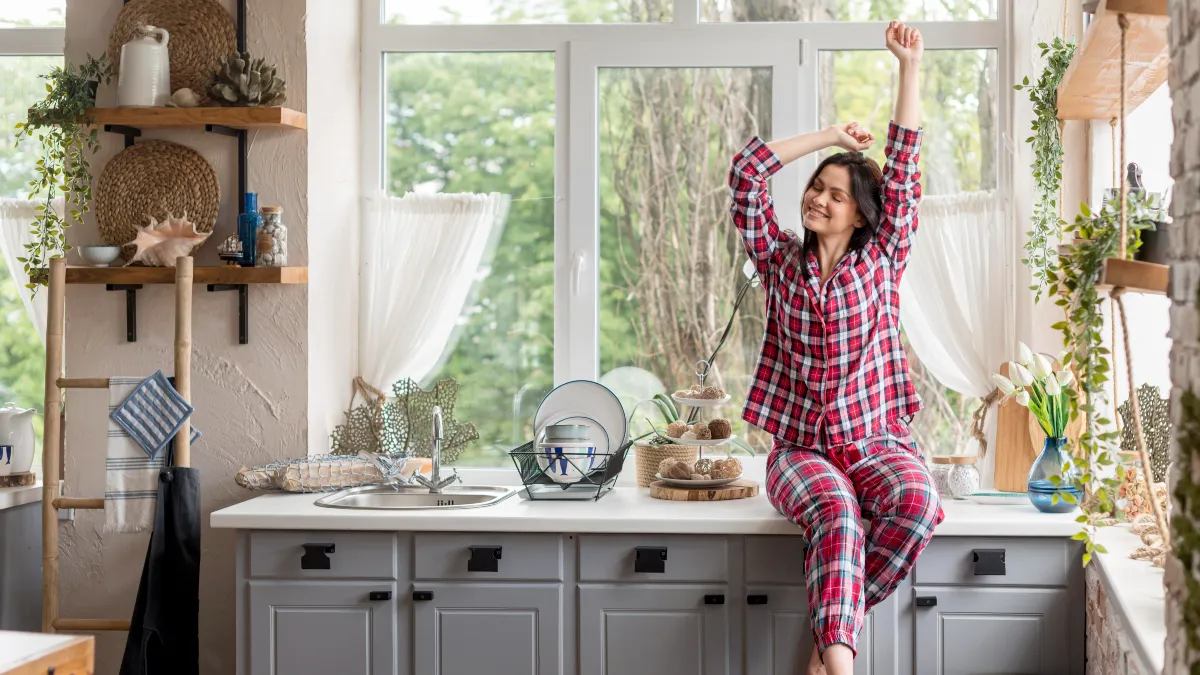Six months ago, I bought into the tiny house dream: a life of freedom and minimalist bliss sold in sun-drenched Instagram posts. I invested my savings and my hopes into a 300-square-foot masterpiece. Today, the ‘For Sale’ sign is in the yard.
The story of why is the brutal, unfiltered truth you won’t see on social media. It is a cautionary tale about the vast, expensive, and stressful canyon between the promise of tiny living and its 2025 reality, a story of hidden financial traps and bureaucratic nightmares the glossy tours omit.
The Sticker Price Lie: Deconstructing the True Cost of My “Affordable” Home
The first brutal truth of tiny living is that the sticker price is a fantasy. The number you see advertised by a builder or on a DIY budget breakdown is merely the down payment on a much larger and more complicated financial reality. My “affordable” $85,000 home quickly became a $150,000 ordeal before I ever spent a night in it.
The deception begins with a fundamental misunderstanding of real estate costs, a misunderstanding the tiny house industry is built upon. Builders market and sell a product—the physical structure—while conveniently externalizing the far larger and more complex costs of the platform it needs to exist on: legally-compliant, serviced land.
The cost per square foot is often the first shock. While the total price seems low, tiny homes frequently cost more per square foot than traditional construction, ranging from $150 to $450. This is because the most expensive parts of any home—the kitchen and bathroom, with their complex plumbing, wiring, and fixtures—have high fixed costs that don’t shrink just because the living room did.
But the real budget-killers are the expenses that happen before the house even arrives. You can’t just park it anywhere. I learned this the hard way. The search for land was a nightmare of zoning restrictions and prohibitive costs. Once I found a small, legally viable parcel, the “raw land” needed to be tamed. This involved:
- A Proper Foundation: Skimping here is a critical safety risk. A high-quality, purpose-built tiny house trailer, engineered to handle the immense weight, costs between $7,000 and $15,000. A cheap, repurposed RV trailer can lead to structural failure. For a permanent location, a concrete slab foundation runs $5,000 to $8,000.
- Utility Hookups: This was the single most shocking expense. Connecting to the municipal power grid cost me nearly $3,000. Because my lot was semi-rural, connecting to the town sewer line was quoted at an astronomical $18,000. The alternative, an off-grid well and septic system, was even more expensive, with estimates between $10,000 and $25,000.
- Site Preparation and Delivery: The land wasn’t level. Grading and preparing the site cost another $4,000. Then came the cost of delivering the house from the builder and setting it up, an often-forgotten line item that can easily add $5,000 to $10,000 to the bill.
- Permits and Inspections: Every step required a stamp of approval from the local government. Building permits, inspections, and various fees added over $3,500 to my “all-in” cost.
By the time the dust settled, the initial price tag had nearly doubled. The dream of affordability had evaporated, replaced by the stark reality of infrastructure costs.
The True Cost of a “Budget” Tiny Home in 2025 (300 sq. ft. Professional Build)

| Item | Low-End Cost | High-End Cost | Notes |
| Pre-built/Custom Home | $75,000 | $129,000 | Based on a popular 300 sq. ft. size. |
| Foundation (Trailer) | $7,000 | $15,000 | A cheap RV trailer is a major safety risk. |
| Site Prep (Grading) | $1,500 | $5,000 | Assuming minimal work required. |
| Utility Hookups (Grid) | $5,750 | $23,000 | Electrical + Municipal Sewer. |
| Utility Hookups (Off-Grid) | $10,750 | $28,000 | Electrical + Well & Septic. |
| Permits & Inspections | $700 | $3,900 | Varies wildly by location. |
| Delivery & Setup | $5,000 | $10,000 | Often forgotten in initial quotes. |
| Estimated “All-In” Total (Grid-Tied) | $94,950 | $185,900 | Excluding land purchase. |
| Estimated “All-In” Total (Off-Grid) | $100,000 | $190,900 | Excluding land purchase. |
The Financing Nightmare: Why Banks See a Liability, Not a Home

With my budget spiraling, I desperately needed a loan. That’s when I ran into the second brutal truth: to the financial world, a tiny house is often not a house at all.
Getting a traditional mortgage is nearly impossible. Most lenders have minimum loan amounts, often starting at $50,000 or even $125,000, which can be more than the cost of the tiny house structure itself. Furthermore, mortgages are for “real property,” which means a home permanently affixed to a foundation. My tiny house on wheels (THOW) didn’t qualify.
This pushed me into the world of alternative financing, a landscape filled with high interest rates and risky compromises:
- Personal Loans: This is the most common route, but it’s a costly one. Unsecured personal loans come with interest rates that can soar as high as 36% and have short repayment terms of five to seven years. This results in punishingly high monthly payments that negate much of the “financial freedom” the lifestyle promises.
- RV Loans: This seems like a logical fit for a THOW, but it comes with a major catch. To qualify, the home must be certified by the RV Industry Association (RVIA), a standard many custom or DIY builders don’t meet. Getting an RV loan also legally classifies your home as a vehicle, which has devastating consequences for its value and insurance options.
- Builder Financing: Some larger tiny home builders offer in-house financing. While convenient, this option can be opaque, with terms and interest rates that are often less favorable than those from a traditional lender.
I was trapped. I had sunk my savings into a project that was too expensive to finish but too unconventional to finance. I ended up cobbling together funds through a high-interest personal loan and credit cards, digging myself into the very debt I had sought to escape.
The Investment Myth: I Didn’t Build Equity, I Bought a Depreciating Asset

When I finally decided to sell, I was forced to confront the most painful financial truth of all. My tiny house wasn’t a real estate investment that had built equity. It was a luxury item, like a car or a boat, and it had depreciated the moment I took possession.
There’s a fundamental paradox at the heart of the tiny home investment debate. For a property to appreciate, it generally needs to be considered “real property”—that is, fixed to land. However, the very features that make tiny homes appealing to many—mobility and the ability to circumvent some building codes—are what classify them as “personal property,” like an RV.
As financial experts at Ramsey Solutions state bluntly, a tiny home on wheels will “depreciate in value just like the truck you pull it with”. The market is niche, and hyper-customized layouts that suit one person’s life are often impractical for the next buyer, further eroding resale value.
Some proponents argue that high-quality tiny homes can hold their value or even appreciate in areas with high demand for affordable housing. But this argument almost always hinges on the appreciation of the land the home sits on, not the structure itself.
This creates an inescapable investment trap. If you choose mobility (a THOW), you are choosing an asset that is legally and financially classified as a depreciating vehicle. If you want any hope of appreciation, you must place the home on a permanent foundation.
But doing so subjects it to the full force of local zoning laws, building codes, and minimum square footage requirements—the very regulations and expenses the movement was supposed to be a clever escape from. You either have a mobile, depreciating asset or a very, very small, and legally complicated, traditional house.
I sold my tiny home for a 20% loss, not including the thousands I had spent on site prep and utilities. It was a costly six-month masterclass in the difference between a home and a liability.
The Unseen Hurdles: My Battle with Red Tape, Risky Builders, and Uninsurable Dreams

Beyond the financial shocks, the day-to-day reality of tiny living is a relentless battle against logistical and bureaucratic hurdles that are invisible from the curated world of social media.
The Zoning Maze: How a Patchwork of Laws Can Make Your Home Illegal Overnight
Finding a legal place to put a tiny house is the single greatest challenge for most owners. There is no national or even statewide standard; it’s a chaotic and contradictory patchwork of city and county ordinances. In my research, I found places like Spur, Texas, that market themselves as “tiny-house-friendly” by eliminating minimum square footage requirements. But in the next county over, the minimum might be 1,200 square feet, instantly outlawing your home.
Common roadblocks that can derail your plans include:
- Minimum Square Footage Rules: The most common barrier, designed for traditional suburban homes.
- Foundation Requirements: Many zones require a permanent, frost-protected foundation, making THOWs illegal for long-term residence.
- RV Park Restrictions: While an option, many RV parks have rules against full-time residency or only accept RVIA-certified vehicles.
- Accessory Dwelling Unit (ADU) Classification: One of the few viable legal paths is to classify your tiny home as an ADU. However, this requires you to place it on a property that already has a primary, traditional home, and it must be fully connected to municipal utilities.
This legal ambiguity creates a constant state of uncertainty. You could be one complaint from a neighbor or one change in local ordinances away from having to move a home that is anything but mobile.
The Builder Gamble: My Dream Home Became a Construction Nightmare
The tiny house boom has attracted a mix of passionate craftspeople and opportunistic, unqualified builders. Choosing the wrong one can turn your dream into a disaster. My own experience involved missed deadlines and poor communication, but my story is mild compared to others.
One family shared their story of paying $117,000 for a “luxury” tiny home that was delivered 5,000 pounds overweight, built on the wrong type of trailer frame, and was literally peeling apart on the bottom. Their dream of traveling the country was replaced by a legal battle with the builder.
Another couple on Reddit detailed a year-long saga with a builder who repeatedly lied about pulling permits, fabricated a story about a neighbor complaint to cause delays, and ultimately never even broke ground, costing them a year of rent and rising material costs.
Even with a reputable builder, critical details can be missed. A frequent regret among owners is inadequate moisture control. In such a small, airtight space, humidity from cooking, showering, and even breathing builds up rapidly. Without a proper vapor barrier and a heat recovery ventilator (HRV) system, condensation can lead to pervasive mold and structural rot, a silent and costly killer of tiny homes.
The Tiny Home Builder Due Diligence Checklist
| Question Category | Essential Questions to Ask | Why It’s Critical |
| Experience & Legitimacy | 1. How long have you been in business? Can I see your license and insurance? | Weeds out inexperienced or illegitimate operators. |
| 2. Can I tour a completed model and speak to 3 past clients? | Verifies quality and customer satisfaction beyond online reviews. | |
| Certification & Codes | 3. Is this home certified (e.g., NOAH, RVIA)? | Crucial for getting insurance and legal parking in many RV parks. |
| 4. What specific building codes do you follow? | Ensures the home is safe and legally compliant, not just a shed. | |
| Construction & Materials | 5. What kind of trailer/foundation do you use? What is its weight rating? | Prevents the overweight/unsafe frame disaster from. |
| 6. How do you address moisture control and ventilation (vapor barriers, HRV)? | Prevents common, costly mold and water damage issues. | |
| Contract & Timeline | 7. What is the firm, final price, and what exactly does it include? | Avoids surprise invoices and “upcharges” like in. |
| 8. What is the guaranteed delivery date, and what are the penalties for delays? | Protects against the endless delays and excuses seen in. | |
| Warranty & Support | 9. What, exactly, does your warranty cover, and for how long? What is the claim process? | Clarifies recourse if things break or were built incorrectly. |
The Insurance Puzzle: Trying to Protect an Asset No One Understands
Insuring my tiny home was a maddeningly circular process. The type of insurance you can get depends entirely on its legal classification, a distinction most insurance agents are not equipped to handle.
- A Tiny House on Wheels (THOW) is considered an RV. It needs RV insurance, which covers transit but may explicitly exclude coverage for full-time residency.
- A Tiny House on a Foundation (THOF) is considered a home. It needs a standard homeowners policy, but insurers are extremely wary. They may deny coverage if the home is a DIY project, doesn’t meet local building codes, or lacks certification from a recognized body like the National Organization of Alternative Housing (NOAH).
This leaves many owners in a dangerous gray area, either uninsured or underinsured, hoping a disaster never reveals the gaps in their policy.
The 200-Square-Foot Pressure Cooker: The Psychological Toll of Tiny Living

The final, and perhaps most brutal, truth is about the lived experience itself. The marketing promises a life of serene simplicity. The reality, for many, is a high-pressure environment that can strain relationships, compromise social life, and take a significant toll on mental health.
Goodbye, Personal Space: The Reality of Constant Proximity
In less than 300 square feet, there is no escape. Every conversation is public, every mood is infectious, and every argument becomes a public performance. The quirky “open concept” design means you can hear a sneeze from across the entire house. For couples, privacy and intimacy become logistical challenges. For families, the daily chaos of toys, school projects, and teenage angst has nowhere to hide.
Your social life also shrinks. Hosting a dinner party becomes a “sardine can comedy sketch,” and having friends or family stay over is often impossible. Your home ceases to be a hub for your community and becomes a private pod built for two, at most. This can lead to a creeping sense of social isolation, as your ability to host and connect with others in your own space is severely diminished.
More Than Just “Cozy”: When Minimalism Triggers Claustrophobia and Anxiety
While minimalism is often touted as a cure for stress, living in an extremely confined space can have the opposite effect. A 2024 study published in Health & Place found a direct scientific link between cramped living spaces (defined as less than 13 square meters, or about 140 square feet) and an increased likelihood of anxiety and depression. The study concluded that such spaces exacerbate family conflicts and can lead to feelings of repression and low self-efficacy.
For some, the feeling is more acute. Claustrophobia, an intense fear of enclosed spaces, can be triggered by the constant confinement of a tiny home. Symptoms can range from mild anxiety to a full-blown panic attack, characterized by shortness of breath, a rapid heartbeat, and a fear of losing control. What is a cozy retreat for one person can be a constant, low-grade trigger for another.
Furthermore, the need to find legal parking often pushes tiny homes into remote, rural areas. While idyllic in photos, this can lead to profound social isolation, cutting residents off from the support systems of friends, family, and community that are essential for mental well-being. As one former tiny dweller lamented, the lifestyle “kept us outside of establishing ourselves in any kind of physical community”.
The Exit Strategy: Why I Sold and Who This Lifestyle Is Actually For in 2025

After six months, the cumulative weight of the financial stress, the constant battle with regulations, and the psychological strain of living in a pressure cooker became unbearable. The dream had become a burden. Selling was not a failure, but an act of self-preservation—a costly but invaluable education in the realities of this lifestyle.
Despite my experience, tiny living is not an impossible dream. It can work, but only for a very specific and well-prepared individual in 2025. This lifestyle is not a shortcut to easy homeownership; it is an expert-level challenge that requires immense resources, resilience, and research.
My Final Verdict and a Checklist for the Undeterred
Based on my ordeal, the person who can succeed in a tiny home in 2025 has the following profile:
- Financially: They can pay cash for the entire project—the house, the land, the foundation, and the utility hookups. This allows them to avoid the trap of high-interest loans and view the home as a lifestyle expense, not a financial investment that needs to appreciate.
- Legally: They have done months of research and have already secured a guaranteed, legal, long-term place to put the home before they even think about hiring a builder. They have spoken directly with local zoning officials and have permits in hand.
- Psychologically: They are a true, committed minimalist, not just someone downsizing. They are either single or in a remarkably resilient and communicative partnership. They thrive on constant problem-solving and are not easily rattled by instability or unforeseen challenges.
- Practically: They possess significant DIY and construction skills to handle the inevitable maintenance and repairs, or they have a healthy budget set aside to hire specialized tradespeople who can work in cramped, non-standard conditions.
Conclusion
The tiny house movement is built on a powerful and appealing promise: that by shrinking our homes, we can expand our lives. My six-month journey taught me that, for most people, the opposite is true. The brutal reality of the cost, the red tape, and the cramped quarters can shrink your finances, your free time, and your well-being.
Before you fall in love with the Instagram photos and the promise of a mortgage-free life, you must confront these truths. Before you sign a contract or pick up a hammer, ask yourself if you’re ready for the realities I’ve shared. If you’re still considering it, use the checklists in this article as your non-negotiable guide—they might just save you from making a $150,000 mistake.

About Me
I'm Kenneth Green, the founder of MindPursuits.com and a devoted trivia aficionado. My journey began with a deep fascination for puzzles and riddles, not just for the challenge they present, but for the intriguing stories and facts they unveil. This passion led me to create MindPursuits.com, a platform where I share my love for trivia with the world.

